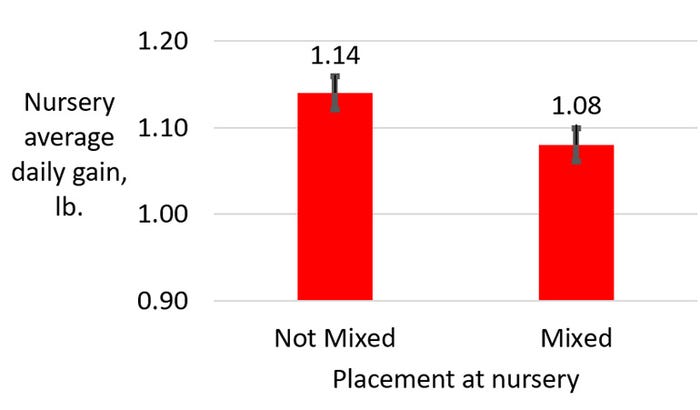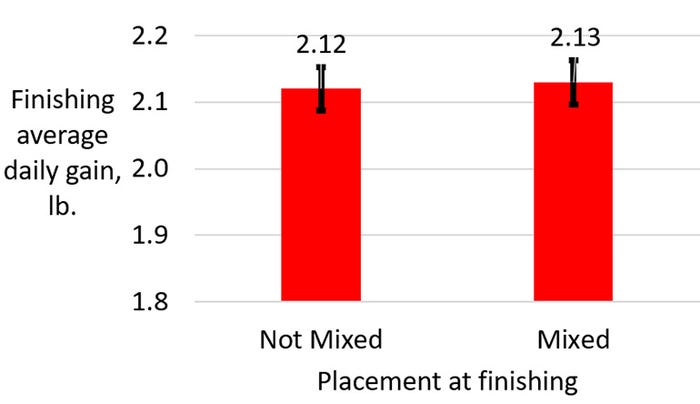Keeping litters intact throughout the nursery phase may be challenging, but future design strategies may be implemented to capture value from not mixing pigs at key points in the pigs’ life cycle.
March 7, 2019

By Mark Knauer and Jeff Wiegert, North Carolina State University
Stressors have been clearly shown to impact pig performance (Hyun et al., 1998). Mixing pigs at nursery and finisher placement is common practice in modern commercial production systems. Yet mixing pigs can be a stressor and impair pig growth rate. Hence the objective of this study was to evaluate the impact of mixing pigs at placement into the nursery and placement into the finisher on growth performance.
At weaning, 630 piglets were individually weighed and placed into the nursery with littermates or in a mixed group. At nursery placement, piglets averaged 29 days of age and were stocked at 2.25 square feet per pig (10 pigs per pen). After 36 days in the nursery, pigs were reweighed, and 480 pigs moved to the finisher. At finisher placement, half of the intact litters were mixed, and half of the pigs mixed in the nursery were mixed again. Hence half of the pens moving from the nursery to the finisher were left intact. In the finisher, pigs were housed in a naturally ventilated barn with fully slatted floors and given 8 square feet per pig (10 pigs per pen).
Nursery average daily gain by mixing treatment is shown in Figure 1. Litters left intact at nursery placement grew more rapidly (P<0.01) than piglets mixed at nursery placement. In agreement, Friend et al. (1983) reported unmixed pigs at nursery placement grew numerically faster than mixed pigs.

Figure 1: Effect of mixing at nursery placement on nursery growth performance.
Finishing average daily gain by mixing treatment is reported in Figure 2. Pens left intact at finisher placement had similar growth rate to pigs mixed at finishing placement. In contrast, Hyun et al. (1998) reported finishing pens left intact grew substantially faster than pens that had been mixed.

Figure 2: Effect of mixing at finisher placement on finishing growth performance.
Results from the current study suggest keeping litters intact throughout the nursery period would enhance subsequent pig market weight by 2.5 pounds per pig. Keeping litters intact throughout the nursery phase may be challenging in modern production systems, yet assuming the response is repeatable, future farmers may design strategies to capture additional value from not mixing pigs at key points in the pigs’ life cycle.
The authors would like to thank Brandon, Tyler, Austin, Bo, Larry, Lee and Terry at the North Carolina Department of Agriculture Tidewater Research Station for their continued help and support. Questions can be directed to Mark Knauer.
References
Friend T. H., D. A. Knabe and T. D. Tanksley, Jr. 1983. Behavior and performance of pigs grouped
by three different methods at weaning. J. Anim. Sci. 57:1406-1411.
Hyun, Y., M. Ellis, G. Riskowski and R. W. Johnson. 1998. Growth performance of pigs subjected
to multiple concurrent environmental stressors. J. Anim. Sci. 76:721-727.
Sources: Mark Knauer and Jeff Wiegert, North Carolina State University, who are solely responsible for the information provided, and wholly owns the information. Informa Business Media and all its subsidiaries are not responsible for any of the content contained in this information asset.
You May Also Like



